Introduction
Gum disease treatment in Lomita is not just about preserving oral health; it may also play a critical role in reducing the risk of serious conditions like stomach cancer. It’s astonishing, but these are facts: in a recently published study as of 2020, the association of periodontal disease and tooth loss with the risk of esophageal and gastric cancer was found in 98,459 women from the Nurses’ Health Study (1992 to 2014). Quite a few strong statements! Let’s delve more into the following article.
Gum disease and stomach cancer—decoding the link
This section gives a detailed account of how stomach cancer and gum disease are connected. So stay tuned for the following 8-minute read.
1. Overview
Gum disease or periodontitis is associated with an increased risk of stomach cancer. The reason behind this is bacterial influx, which migrates from the mouth into the gastrointestinal tract. They mix with the good bacteria and diminish the “oral-gut axis.” The oral microbiome plays a crucial role in systemic health. When gum disease alters this delicate balance, harmful bacteria can:
- Trigger chronic inflammation
- Travel to the stomach and colon
- Increase the risk of polyps and cancerous growth.
- It can lead to other conditions like diabetes, heart disease, Alzheimer’s disease, and even cancer.
If you think overcoming this issue is difficult, you are mistaken. With Gum disease treatment in Lomita, you can get back to normalcy. Dr. Smile is all out there to help you. We are operational at more than 2 locations, namely, San Pedro, Orange County, and Newport Beach, so navigating to us is always easy. In addition, we have a team of professionals, be they emergency, general, and Cosmetic dentists in Newport Beach, who can help you with the process.
2. Prevention is better than a cure.
Gum disease may begin with subtle symptoms, but its long-term consequences can be severe, ranging from tooth loss to increased risk of systemic illnesses like stomach cancer. The good news is that gum disease is largely preventable. By adopting a consistent oral hygiene routine and seeking professional care when needed, you can avoid the need for intensive gum disease treatment in Lomita.
Here’s how to stay ahead of gum disease:
-
Brush twice daily with fluoride toothpaste
Brushing your teeth in the morning and before bed helps remove plaque and food particles that feed harmful bacteria. Fluoride strengthens tooth enamel and prevents cavities, which, if left untreated, can contribute to gum inflammation. Use a soft-bristled toothbrush and replace it every three months or sooner if the bristles become frayed. This simple habit is one of the most effective ways to reduce your risk of needing gum disease treatment in Lomita.
-
Floss daily to remove plaque between teeth
Even the most thorough brushing can’t reach the tight spaces between your teeth. Flossing dislodges plaque and debris that accumulate in these areas, preventing gum irritation and infection. If traditional flossing feels difficult, consider using floss picks or water flossers. These tools make it easier to maintain gum health and reduce the likelihood of developing conditions that require gum disease treatment in Lomita.
-
Use an antimicrobial mouthwash
Rinsing with an antimicrobial mouthwash helps reduce bacteria in the mouth, freshens breath, and prevents plaque buildup. Look for mouthwashes containing chlorhexidine, cetylpyridinium chloride, or essential oils. Regular use can be a powerful complement to brushing and flossing, especially for those at higher risk of needing gum disease treatment in Lomita.
3. Visit your dentist regularly.
Whether it’s a cosmetic dentist in Newport Beach for routine care or an emergency dentist in Lomita for urgent issues, routine dental checkups are essential for early detection and prevention. A cosmetic dentist in Newport Beach can help maintain your smile’s appearance while monitoring gum health. Meanwhile, a dentist is equipped to handle sudden symptoms like bleeding gums, swelling, or pain.
During these visits, your dentist may:
- Perform professional cleanings to remove tartar
- Evaluate gum pockets and tissue health
- Take X-rays to detect bone loss or hidden infections
- Provide personalized advice on oral hygiene and lifestyle
If signs of gum disease are present, early intervention can prevent the need for more invasive gum disease treatment in Lomita.
4. The treatment process
Where there is a will, there is a way. Similarly is the case is with gum disease and stomach cancer. With gum disease treatment in Lomita, you can reduce your chances of getting an erupted “oral-gut axis” by 54%.
There are two methods used in the treatment process
-
Non-surgical gum disease treatments:
For early-stage gum disease, noninvasive treatments can be highly effective. These include:
- Scaling and root planing: A deep cleaning procedure that removes plaque and tartar from below the gum line and smooths the tooth roots to prevent future buildup.
- Antibiotic therapy: Topical or oral antibiotics may be prescribed to eliminate the infection.
- Improved oral hygiene: Dentists teach proper brushing and flossing techniques to prevent recurrence.
- Laser therapy (LANAP): A minimally invasive procedure using lasers to remove diseased tissue while preserving healthy gums.
These treatments are often available through both general and cosmetic dentists in Newport Beach, especially those who specialize in periodontal care.
-
Surgical gum disease treatments:
When gum disease progresses, surgical intervention may be necessary. Common procedures include:
- Pocket reduction surgery: Incisions are made to access and clean deep pockets around the teeth, reducing bacteria and inflammation.
- Bone grafting: Used when bone loss has occurred, this procedure rebuilds the jawbone using graft material.
- Gum grafting: Tissue is taken from another part of the mouth (often the palate) and attached to areas with gum recession.
- Flap surgery: The gums are lifted to allow deep cleaning and reshaping of the bone. These procedures are typically performed by periodontists or referred by an emergency dentist in Lomita when immediate care is needed.
Conclusion
The connection between gum disease and stomach cancer is a wake-up call. Oral health isn’t just about teeth—it’s about your entire body. Seeking gum disease treatment in Lomita can be a life-saving decision. Whether you’re enhancing your smile or seeking urgent care from an emergency care unit, we have it all. Make gum health a priority. Because sometimes, the smallest symptoms hide the biggest risks.
Frequently asked questions
Q. What are the early signs of gum disease?
Early signs include bleeding gums, bad breath, gum swelling, and tooth sensitivity. If you notice these, seek gum disease treatment in Lomita promptly.
Q. Is gum disease reversible?
Gingivitis, the early stage, is reversible with proper care. Advanced periodontitis requires professional gum disease treatment in Lomita, including surgical options.
Q. How painful is gum disease treatment?
Nonsurgical treatments are generally painless. Surgical procedures may involve mild discomfort, but local anesthesia and post-care make it manageable.
Q. How often should I visit the dentist for gum health?
Twice a year is standard, but those with gum disease may need more frequent visits. Whether it’s a cosmetic dentist in Newport Beach or an emergency dentist in Lomita, regular checkups are key.
Q. What is scaling and root planing?
It’s a deep cleaning procedure that removes plaque and tartar from below the gum line. It’s a common part of gum disease treatment in Lomita.
Q. Can a cosmetic dentist treat gum disease?
Yes, many cosmetic dentists in Newport Beach offer periodontal services or refer patients to specialists.
Q. How do I choose the right dentist?
Look for experience in periodontal care, patient reviews, and availability of both non-surgical and surgical options. Whether you’re in Newport Beach or Lomita, prioritize expertise in gum disease treatment in Lomita.

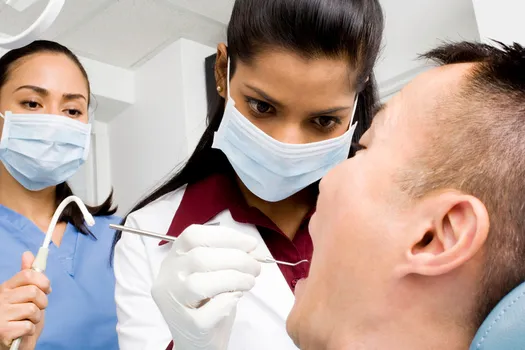


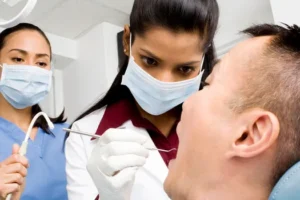
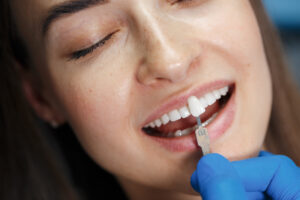


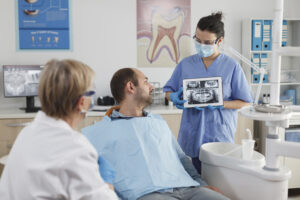
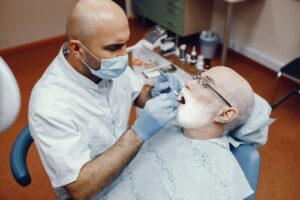


Leave a Reply